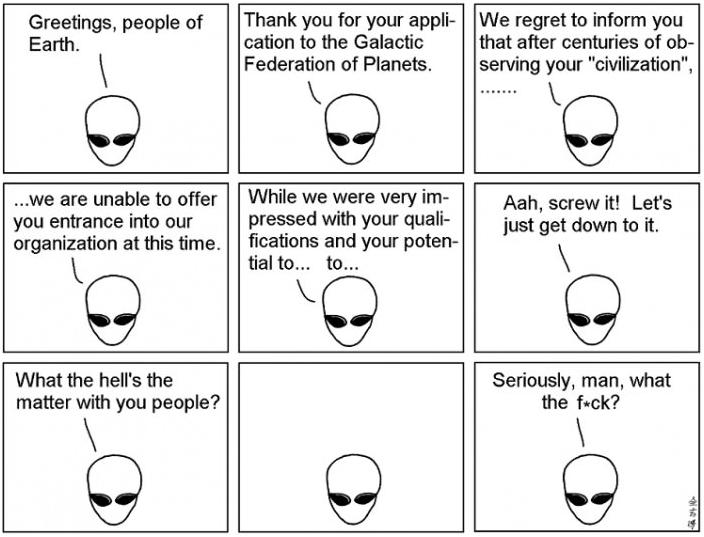Yesterday I got involved in a slightly disturbing argument on facebook prompted by a rather misleading image that’s been doing the rounds. I assume it’s a response to the Dear Religion image on the left which I found kind of amusing but does imply that all religious people are anti science. Personally I’ve met some religious people who are quite open minded in other ways so, it seems to me, they’re not all hopeless creationists.
 The image that started the argument was this one that claims the rover which just landed on Mars cost $100billion – a number that can be refuted with a simple google search which hardly qualifies as in depth research. An article on Space News about the Mars Science Lab cites the cradle to grave cost of the mission as $2.5 billion or, to put it another way, this image claims the mission is costing some 40 times more than it actually does.
The image that started the argument was this one that claims the rover which just landed on Mars cost $100billion – a number that can be refuted with a simple google search which hardly qualifies as in depth research. An article on Space News about the Mars Science Lab cites the cradle to grave cost of the mission as $2.5 billion or, to put it another way, this image claims the mission is costing some 40 times more than it actually does.
What angers and appalls me most about this particular image and the resulting discussion isn’t so much the lack of accuracy as the wilful ignorance and lack of perspective that goes into creating and sharing this kind of misinformation. I was asked if I thought it would have been kinder to spend that money on sick, hungry and deprived people which led me to do a little research.
According to the fast food global industry guide the global market for fast food was worth $252.9 billion in 2011, or some hundred times the cost of the Mars Science Lab. Even worse, that figure is for a single year and the mars mission is amortised over 8 years so it’s more like 800 times the cost. I have no idea how to begin placing a value on the benefits that the space program brings to society or the horrible costs the fast food industry brings to the table in terms of health problems and environmental damage.
I also took a look at some figures for purchasing power parity gross domestic product of the 10 largest economies of the world and plugged a few figures into a spreadsheet to try and put the numbers into some sort of perspective. Averaging out the numbers shows that Curiosity cost the population of the 10 largest economies approximately $0.70 per person and apparently the fast food industry takes around $70 per person per year.
Here’s the spreadsheet – play with the numbers, form your own conclusion. I’m just going to finish off with another amusing image.

I dont believe in religion but it is extremely good for society. In the American south the lower class whites are not acting like chavs because of religion.
England’s descent into chavdom seems to be linked to its distancing from christianity.
I’d really suggest looking a bit more deeply into the actions perpetrated in the name of religion and question why not all religious people are moral and not all atheists are immoral.
It’s quite difficult to pin down an actual definition of a chav but you might be interested in http://www.guardian.co.uk/books/2011/jun/19/chavs-demonization-working-class-review . You could be excused for thinking England is being overrun by chavs but really that’s a myth being spread by right wing media.
The immoral actions perpetrated in the name of christianity were bad but you dont see that happening nowadays. I grew up in England and experienced chavs first hand and they are rightly demonized by the newspapers because they act like demons.
I live in the USA now and no-one in the South acts like chavs at all. Ive been all over the south-eastern states.